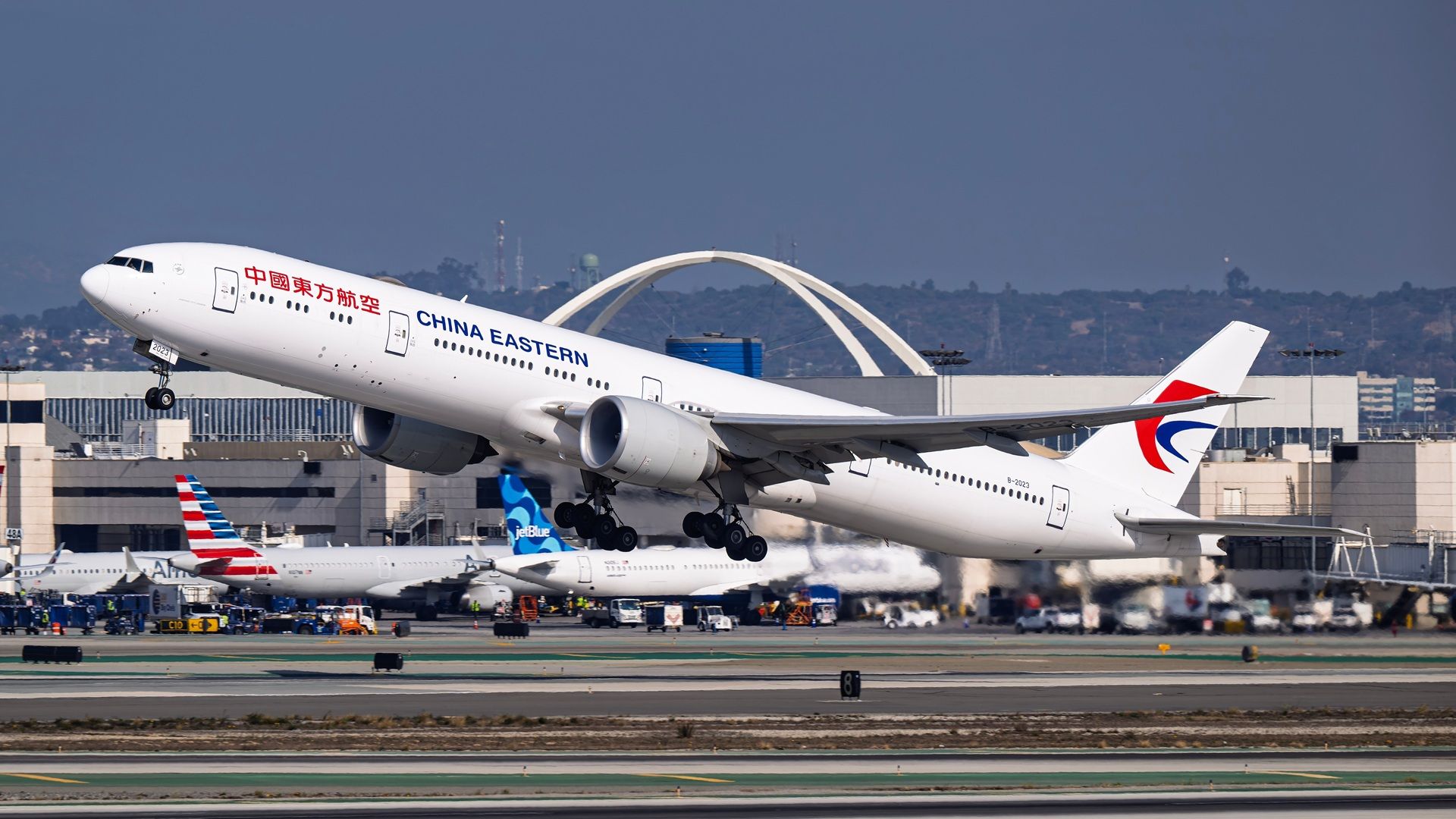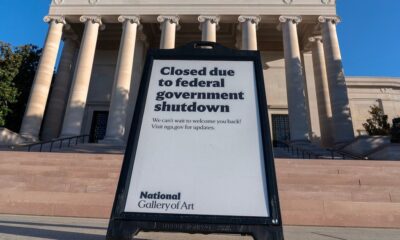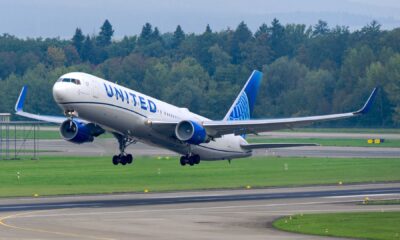World
US Government Proposes Ban on Chinese Airlines Over Russia

The United States government has proposed a ban on Chinese airlines that utilize Russian airspace for their routes to and from the US. This decision comes as the Trump administration argues that US carriers are at a competitive disadvantage. Currently, US airlines cannot operate in Russian airspace due to sanctions related to the ongoing military conflict in Ukraine. As a result, US carriers face higher operational costs, which the Department of Transportation identifies as having “substantial adverse competitive effects.”
This situation raises questions about the implications for Chinese airlines, particularly those with existing routes to the US. A closer look reveals which Chinese carriers are currently operating in the US market, their flight frequencies, and the aircraft types used.
Air China Leads in US Flights
According to scheduling data from Cirium, an aviation analytics firm, Air China ranks as the Chinese airline with the most flights and available seats on US routes for October 2025. The airline has scheduled a total of 124 flights, providing 41,912 seats. This translates to an average of two round trips per day, although these flights are spread across five different routes.
The majority of Air China’s services originate from Beijing (PEK), with an exception for a Boeing 777 flight from Shenzhen (SZX) to Los Angeles (LAX). Among the Beijing routes, flights to Washington (IAD) and New York (JFK) utilize the Boeing 747, while routes to Los Angeles and San Francisco (SFO) employ the 777. Notably, both the Beijing and Shenzhen routes to Los Angeles are among four that overfly Russian territory. Aviation analyst Floris de Haan comments on consumer choice, noting that travelers often prioritize price, frequency, and convenience over the geopolitical implications of their routes.
Other Major Chinese Airlines
In addition to Air China, China Eastern Airlines and China Southern Airlines also feature prominently in the US market, each averaging more than one round trip per day. China Eastern has scheduled 105 flights in October, with routes originating from Shanghai. The airline operates daily flights to Los Angeles using the Boeing 777-300ER and offers additional services to San Francisco and New York. Importantly, the New York route also crosses over Russian airspace.
China Southern Airlines, for its part, has 88 flights this month, translating to 44 round trips. Its primary route connects Guangzhou with LAX, with the Boeing 777-300ER being the aircraft of choice. The airline also operates flights from Guangzhou to both JFK and San Francisco, as well as from Wuhan to San Francisco.
Smaller Carriers and Their Routes
On the other end of the spectrum, smaller carriers such as Xiamen Airlines and Hainan Airlines have more limited services. Xiamen Airlines operates two routes to the US, neither of which overflies Russia. Utilizing the Boeing 787-9, the airline offers three weekly flights from Xiamen (XMN) to LAX and two from Fuzhou (FOX) to JFK.
Hainan Airlines operates a thrice-weekly service from Beijing to Boston (BOS) using the Boeing 787-9, although this route includes a stopover in Brussels on the return leg. The airline also flies weekly from Haikou (HAK) to Seattle (SEA) via Chongqing (CKG) and offers non-stop services from Beijing to Seattle twice a week.
Lastly, Sichuan Airlines operates a single route to the United States, flying from Chengdu (TFU) to Los Angeles (LAX) with a total of 13 outbound and nine inbound flights this month, utilizing the Airbus A350.
As the US government evaluates the competitive landscape for airlines, the proposed ban on Chinese carriers that overfly Russia could significantly alter the dynamics of international air travel, particularly for those routes connecting the US and China.
-

 World3 months ago
World3 months agoScientists Unearth Ancient Antarctic Ice to Unlock Climate Secrets
-

 Entertainment3 months ago
Entertainment3 months agoTrump and McCormick to Announce $70 Billion Energy Investments
-

 Science3 months ago
Science3 months agoFour Astronauts Return to Earth After International Space Station Mission
-

 Lifestyle3 months ago
Lifestyle3 months agoTransLink Launches Food Truck Program to Boost Revenue in Vancouver
-

 Technology2 months ago
Technology2 months agoApple Notes Enhances Functionality with Markdown Support in macOS 26
-

 Top Stories7 days ago
Top Stories7 days agoUrgent Update: Fatal Crash on Highway 99 Claims Life of Pitt Meadows Man
-

 Sports3 months ago
Sports3 months agoSearch Underway for Missing Hunter Amid Hokkaido Bear Emergency
-

 Politics2 months ago
Politics2 months agoUkrainian Tennis Star Elina Svitolina Faces Death Threats Online
-

 Technology3 months ago
Technology3 months agoFrosthaven Launches Early Access on July 31, 2025
-

 Politics3 months ago
Politics3 months agoCarney Engages First Nations Leaders at Development Law Summit
-

 Entertainment3 months ago
Entertainment3 months agoCalgary Theatre Troupe Revives Magic at Winnipeg Fringe Festival
-

 Politics1 week ago
Politics1 week agoShutdown Reflects Democratic Struggles Amid Economic Concerns




















